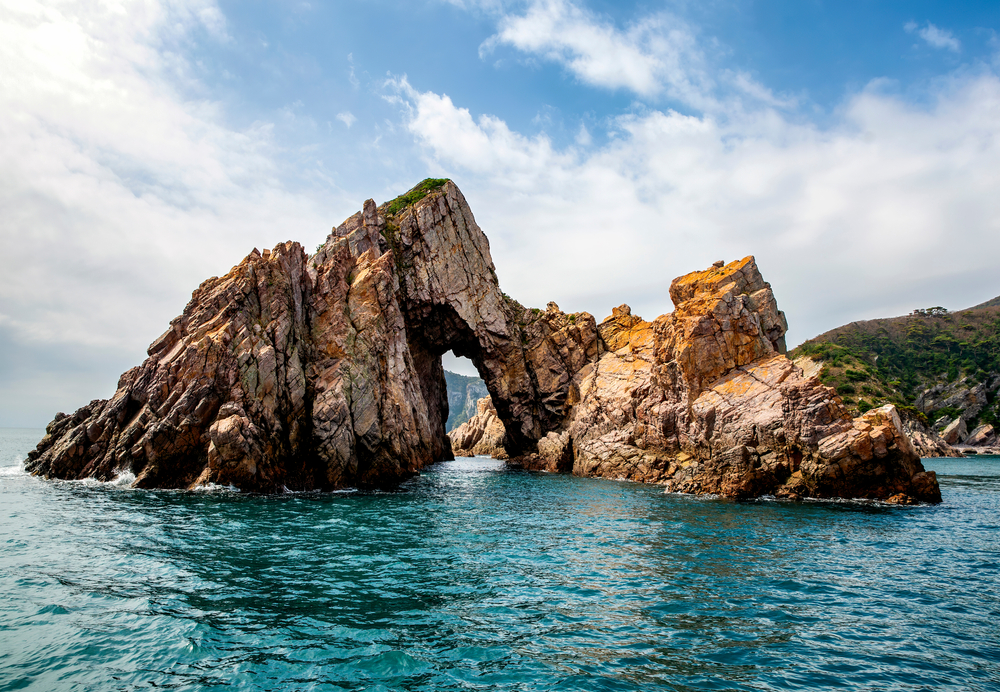Dadohaehaesang Overview
Dadohaehaesang National Park, located in South Korea, is the country’s largest national park and a marine treasure. The park encompasses a vast area of 882.42 square miles (2,285.99 square kilometers) and stretches across the southern coastline and numerous islands in the provinces of Jeollanam-do and Gyeongsangnam-do. Its name translates to “Sea of Many Islands,” a fitting description for a region famed for its pristine waters, dramatic coastlines, and a staggering array of over 1,500 islands and islets, including popular destinations like Hongdo, Heuksando, and Geomundo. These islands and their surroundings form a breathtaking seascape of rugged cliffs, hidden beaches, and lush forests.
The terrain is a blend of mountainous landscapes and coastal beauty. The park’s rugged islands feature dramatic rock formations and peaks, such as Bijindo and Bogildo’s jagged cliffs that rise above the sea. The islands’ interiors often host dense pine forests, camellias, and azaleas, which bloom spectacularly in spring. The waters of Dadohaehaesang are rich in marine life and surround stretches of mangroves and tidal flats. The combination of the marine environment and land ecosystems creates a unique biodiversity hotspot.
Wildlife within Dadohaehaesang National Park is equally diverse and fascinating. Visitors might encounter the Korean goral, a goat-like mammal found in the rocky areas of the islands, or spot the Eurasian otter along the waterways. Birdlife is abundant, with species like ospreys, black-faced spoonbills, and various migratory seabirds making the park a critical avian habitat. The surrounding waters teem with life, including crabs, octopuses, and colorful reef fish, and the area’s healthy marine ecosystems also support pods of dolphins that are sometimes seen swimming near the islands.
Popular features of the park include its breathtaking hiking trails, which often offer panoramic views of the islands and the open sea. The Geomundo islands are notable for their historical significance as a base for international trade, while Hongdo and Heuksando are prized for their dramatic natural beauty and cultural traditions. Coastal kayaking, snorkeling, and boat tours allow visitors to immerse themselves in the marine environment. The tidal flats and beaches are excellent spots for shell collecting or observing marine creatures up close.
Visitors engage with Dadohaehaesang National Park in many ways, including through hiking, exploring ancient fishing villages, and partaking in eco-tours that showcase the region’s biodiversity. The park also offers opportunities to learn about traditional Korean maritime culture, with events and exhibits highlighting the customs of local island communities.
The park faces conservation challenges due to its vulnerability to climate change and human activities like overfishing and tourism pressure. However, concerted management efforts have led to successes in protecting endangered species, restoring ecosystems, and promoting sustainable tourism. Strict regulations and community involvement have also helped balance preservation with development, making Dadohaehaesang National Park a model of marine and terrestrial conservation.










































































